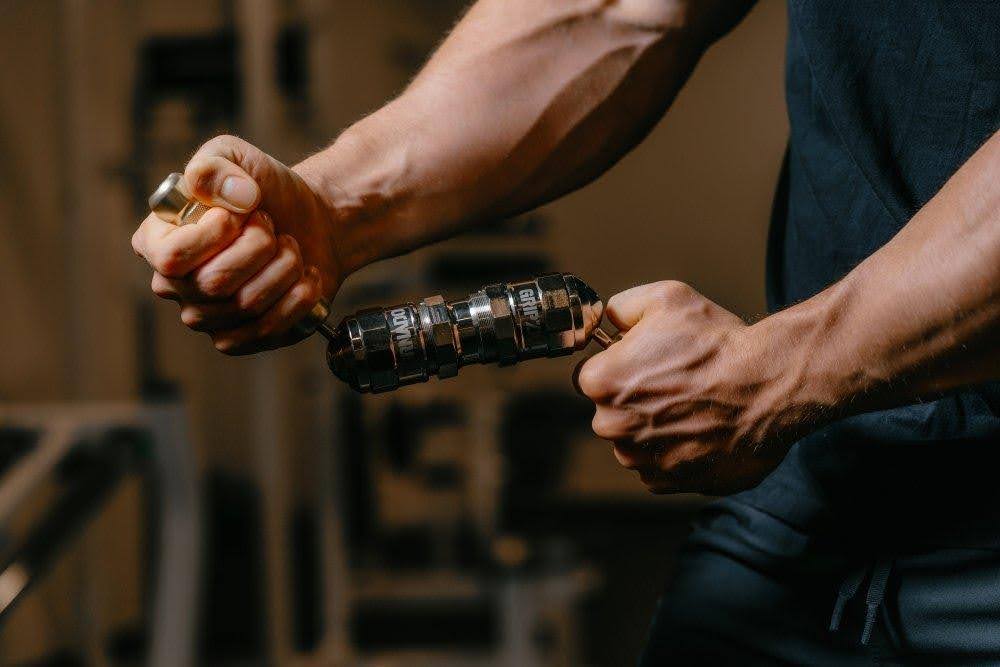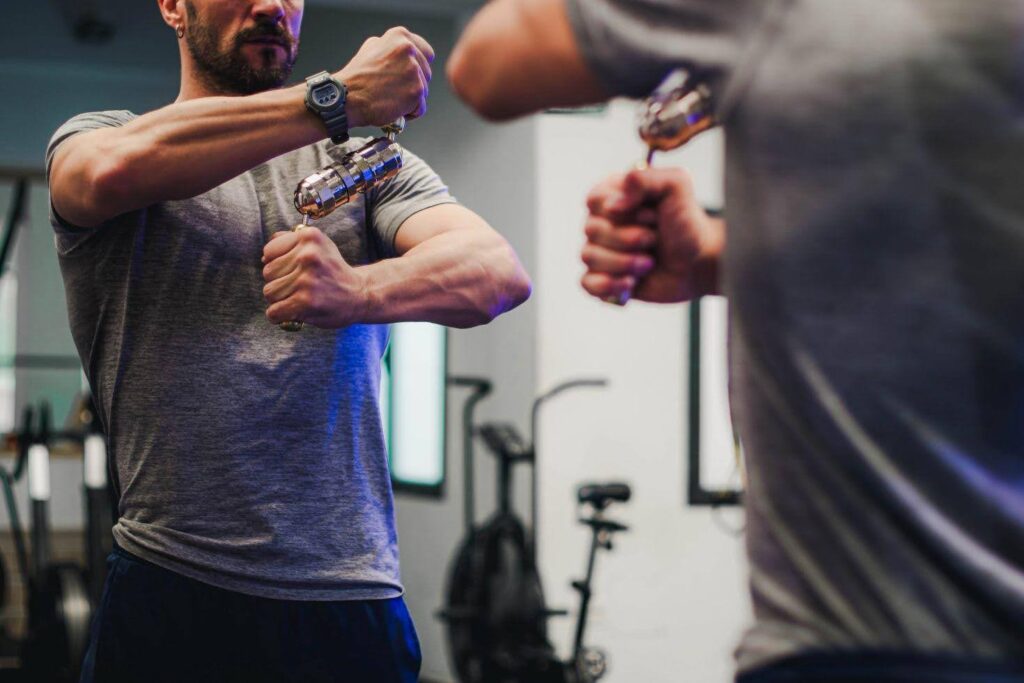When most people hit the gym, they load up on curls, presses, and rows. The goal? Bigger biceps, thicker triceps, wider shoulders.
But the part of the arm that shows strength at a glance, the forearms, rarely gets the same attention.
And that’s why so many lifters walk around with impressive upper arms sitting on top of narrow, underdeveloped wrists. The imbalance shows immediately.
On the flip side, someone who trains forearms properly looks complete. Their grip feels solid in a handshake. Their arms look powerful without them even trying.
So, here’s the truth: if your forearms look flat or your grip feels weak, it’s not about doing more of the same old wrist curls. The missing piece is a training style that almost no one talks about:
Why Standard Forearm Work Doesn’t Cut It
You’ve probably tried the usual suspects, wrist curls, reverse curls, maybe some farmer’s carries. These aren’t useless, but they only hit your forearms in a straight line. Your wrist flexors and extensors get worked, but the deeper muscles that give your arms density and definition barely wake up.
Forearms are built for more than simple bending and extending. Every day you twist door handles, rotate jars, and shift angles when you grip objects. That twisting and turning motion is what most gym workouts completely ignore. And that’s why progress stalls.
When you add rotational stress into the mix, the game changes. Suddenly your forearms light up in ways normal curls can’t touch. It’s the same principle that makes boxing gloves for serious athletes a training necessity—they’re built to withstand and deliver power through complex, rotational movements, not just brute force.
The Overlooked Power of Rotation
Look at the strongest grips in the world like climbers, grapplers, manual laborers. They don’t just squeeze; they rotate, twist, and adjust constantly under tension. Their forearms are conditioned to handle unpredictable torque.
That’s the type of stimulus that creates real growth. Not just bigger muscles, but thicker tendons, stronger stabilizers, and the kind of vascularity that makes forearms look carved.
If you’ve ever wondered why your arms don’t get that “finished” look no matter how much you train, this missing piece is probably the answer.
The Tornado Method
Here’s where a tool like the Tornado comes in. Instead of static squeezing, it challenges your forearms with continuous rotation under resistance. Imagine twisting against constant tension because that way, your grip never gets a break, and your muscles are forced to adapt from every angle.
 This isn’t just another grip gadget. It’s a different training method entirely:
This isn’t just another grip gadget. It’s a different training method entirely:
- Constant Tension: Your forearms don’t get a chance to relax, which floods the muscles with blood and builds endurance.
- Rotational Load: Each turn hits new fibers, forcing growth and definition in areas most exercises leave untouched.
- Compact Workouts: A few sets can leave your forearms pumped in under 10 minutes.
How to Fit Tornado Training Into Your Routine
The key is not overthinking it. You don’t need an extra 45-minute “forearm day.” Two focused sessions a week are enough. Here’s a simple structure that works:
- Rotation-Based Grip Drill (Tornado) – 3 sets of 45–60 seconds
- Thick Bar or Towel Holds – 3 sets for maximum time
- Reverse Curls – 2–3 sets of 10–12 reps
- Finger Extensions with Bands – 2–3 high-rep sets for balance
Notice how Tornado work goes first. It wakes up the muscles, sets the tone, and makes everything after more effective.
Why This Approach Works
Forearms respond best to variety in tension. With the Tornado, you’re not just lifting up and down, you’re twisting, rotating, and forcing constant micro-adjustments. That means:
- More muscle fibers recruited
- Faster visible definition
- Grip strength that carries over to everything else
It’s a smarter way to train because it mimics how your arms actually work in the real world.
Real-World Carryover
Defined forearms aren’t just cosmetic. They change how your body performs:
- Deadlifts and pull-ups feel locked in.
- Heavy carries become easier.
- Combat athletes gain crushing grip strength.
- Everyday tasks like hauling groceries or turning a stubborn lid feel effortless.
That’s the beauty of this method. It builds show and go. You look stronger, and you are stronger.
Bringing It All Together
Most people spend years repeating the same forearm drills and wonder why nothing changes. The answer isn’t more reps of the same moves, it’s a shift in stimulus. Once you add rotational resistance, growth happens fast.
So if your arms have looked the same for months, it’s time to plug the gap. Add this training method into your routine, and let your forearms finally catch up with the rest of your training.
